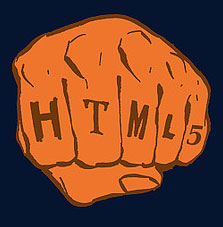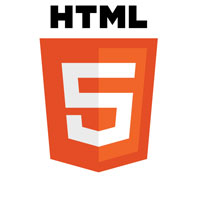HTML5 is taking over the web. With the new standard comes great capabilities to web developers, and one of these capabilities is being able to put web video on their websites without relying on browser plug-ins such as Flash. Because of this, it seems likely that Flash, long the entrenched leader in media rich web applications and video, will be replaced by the open web standard.
Flash has been around since the mid-1990s, becoming a benchmark in media development on the web. It has been used by the majority of websites on the web, from corporate websites to video sharing sites like YouTube, and over the course of its long history it has grown with additional features and ease of use.
Since it has been around for so long, it will take time for HTML5 to replace it, but there are already several factors in play that might speed up the process.
Factors in HTML5’s Favor
One of the key factors is that HTML5 is already supported by roughly 70% of the web market. Of that 70%, all of the mobile market supports the new web standard, which is big news since smartphones are set to rival desktops and laptops in terms of total time spent online. Devices like iOS, which make up a sizable chunk of the mobile surfing pie, do not support Flash.
All of this brings us to the second major factor: Adobe is supporting HTML5. In particular, Adobe will be ceasing development of Flash on mobile platforms, only offering one more major update to Flash 11 on current devices. The desktop version of Flash will also begin incorporating HTML5 features, allowing web developers to make their online videos compatible with future versions of mobile operating systems and browsers that do not have the Flash plug-in installed.
Despite all of these factors in favor of HTML5 overtaking Flash sooner rather than later, there are still a couple of things holding HTML5 back.
Factors in Flash’s Favor
 As noted above, Flash is the long established standard for media on the web. It will take a lot of time for the majority of websites on the web to make the switch. There is also the concern of keeping compatibility with older browsers.
As noted above, Flash is the long established standard for media on the web. It will take a lot of time for the majority of websites on the web to make the switch. There is also the concern of keeping compatibility with older browsers.
The major hurdle right now, though, is that the HTML5 standard is not yet finalized. The World Wide Web Consortium (W3C) is working on several key areas that are not yet decided on. Due to this, HTML5 behaves a little differently from browser to browser, and some aspects of the current version of HTML5 are supported by some browsers but not others. This scares off a majority of website owners from implementing HTML5 on their websites, which puts off the day HTML5 fully replaces Flash.
The Inevitability
One thing is clear: HTML5 will eventually replace Flash. The day and time are currently unknown, but as HTML5 approaches its final specification and more and more websites make the switch, the Flash standard will be used less and less.
How long it will take remains a mystery, but major players like Adobe, Google, and Microsoft are already implementing HTML5 into their web platforms. The rest of the web will follow suit.

